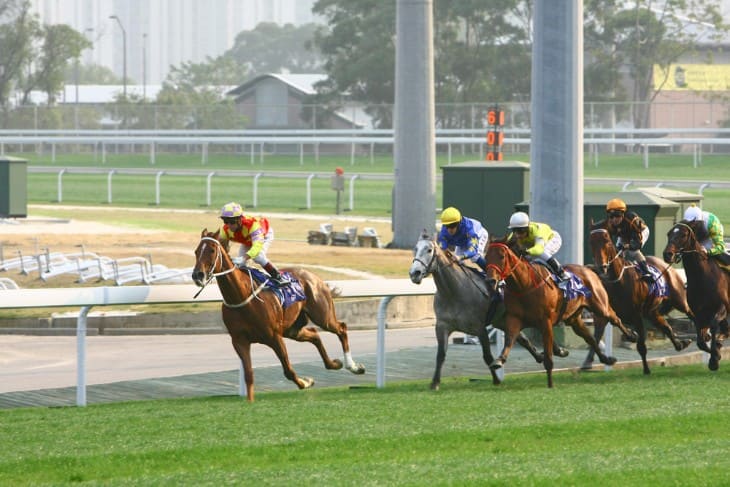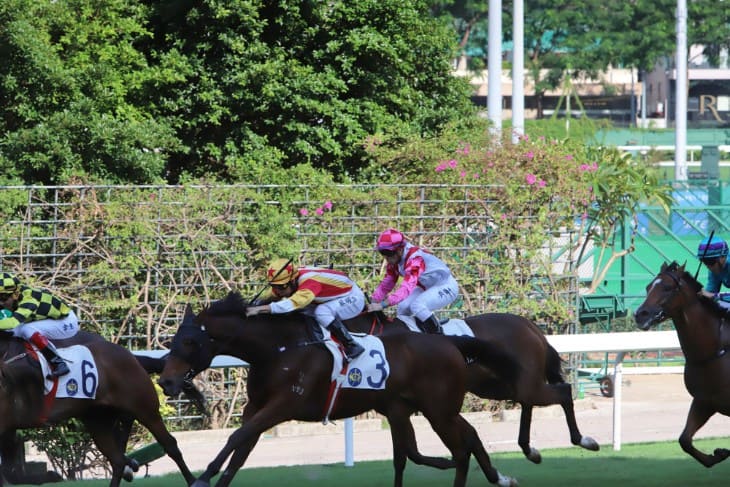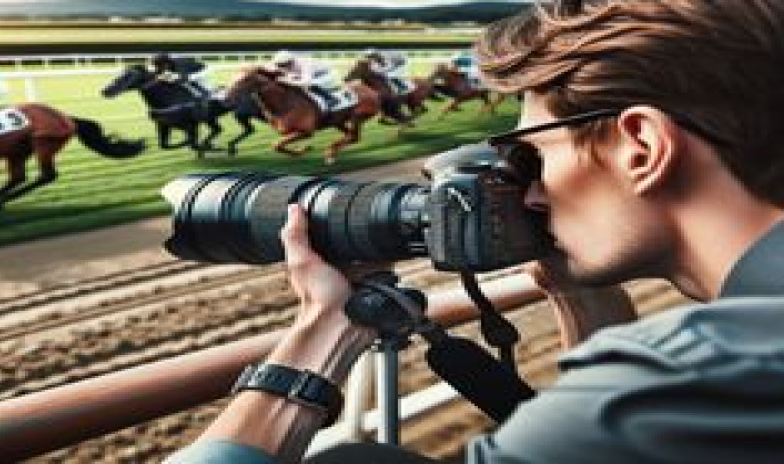- Capturing the Essence of the Sport
- Essential Gear for Stunning Shots
- Mastering the Basics of Composition
- Understanding Lighting for Dynamic Results
- Freezing the Action: Shutter Speed Techniques
- Showcasing Speed: Panning Techniques
- Focusing on Excellence: Autofocus Tips
- Timing and Anticipation: Capturing the Winning Moment
- Captivating Close-ups: Portraits of Equine Athletes
- The Photographer's Toolkit: Editing and Post-processing
- Conclusion: Preserving the Passion through the Lens
Welcome to the world of horse racing photography! Whether you're an avid fan of the sport or a photography enthusiast, capturing the dynamic energy and elegance of thoroughbred racing can be an exhilarating experience. In this comprehensive guide, we'll dive into the essential techniques, gear, and know-how you need to master the art of horse racing photography. From freezing the galloping action to capturing the heartwarming moments behind the scenes, this article will equip you with the skills to tell compelling stories through your lens.
Capturing the Essence of the Sport
When it comes to horse racing photography, it's not just about taking pictures – it's about capturing the essence of the sport. The thundering hooves, the determination in a jockey's eyes, the grace of a horse in full stride – these are the moments that make horse racing a spectacle. Your goal as a photographer is to immortalise these moments in pixels.
As you stand trackside, take in the surroundings. Observe the various elements that make up a race – the spectators in their finery, the vibrant colours of jockey silks, the racecourse itself. Your lens should not only focus on the main event but also capture the atmosphere that surrounds it. This includes the excitement before the race, the intensity in the paddock as horses are prepared, and the jubilation or disappointment in the aftermath. The true magic of horse racing lies not only in the action but also in the emotions it evokes.
Essential Gear for Stunning Shots
Before you even press the shutter button, having the right gear can make a world of difference in your horse racing photography journey. The basics include a good quality DSLR or mirrorless camera. These cameras offer the flexibility to switch lenses and adjust settings on the fly, essential for capturing fast-paced action.
Speaking of lenses, a telephoto lens is your best friend on the racecourse. Opt for a lens with a focal length of around 200mm to 400mm – this will allow you to get close-up shots even if you're stationed a good distance from the track. A lens with image stabilisation can help counteract the vibrations caused by your own excitement or the movement of the crowd.
Accessories like a sturdy tripod or monopod can help stabilise your shots, especially if you're shooting for extended periods. A lens hood will shield your lens from glare, while spare batteries and memory cards are a must to ensure you don't miss any crucial moments.
Mastering the Basics of Composition
Now that you have your gear sorted, it's time to focus on the art of composition. Composition is the arrangement of elements within your frame that guides the viewer's eye and tells a visual story. In horse racing photography, getting your composition right can transform an ordinary shot into a captivating masterpiece.
A fundamental principle to keep in mind is the "Rule of Thirds." Imagine your frame divided into a tic-tac-toe grid. Placing your subject along these imaginary lines or at their intersections creates a visually engaging composition. Whether it's the jockey and horse in action or the finish line, aligning these key elements with the grid can add balance and depth to your shot.
Framing is another technique to enhance your composition. Use natural elements like grandstands, fences, or trees to frame your subjects, drawing the viewer's attention to the focal point. This technique not only adds visual interest but also gives a sense of place and context to your images.
Leading lines are your secret weapon for creating dynamic compositions. The track itself, with its curves and straightaways, naturally forms leading lines that draw the eye towards the heart of the action. Experiment with different angles and positions to find the lines that best lead the viewer's gaze through your photograph.
Understanding Lighting for Dynamic Results
Lighting plays a crucial role in photography, and horse racing photography is no exception. The right lighting can elevate your shots from mundane to mesmerising. As a horse racing photographer, you'll often encounter a mix of natural and artificial lighting conditions, each with its own challenges and opportunities.
When shooting outdoors, the "golden hour" – the hour after sunrise or before sunset – is a favourite among photographers. During this time, the sunlight is softer, casting warm, flattering tones on your subjects. The long shadows can add depth and dimension to your images, creating a sense of drama.
On the other hand, overcast skies can provide a diffused, even light that minimises harsh shadows. This is ideal for capturing details and expressions without worrying about strong contrasts. However, in situations where the sun is high in the sky and shadows are harsh, consider using a fill flash to balance the exposure and illuminate the shadows.
Indoor racecourses often present a different challenge. Artificial lighting can cast colour casts and uneven lighting, making white balance adjustments important. Shooting in RAW format gives you greater flexibility in post-processing to correct any colour discrepancies.

Freezing the Action: Shutter Speed Techniques
One of the thrilling aspects of horse racing photography is capturing the intense action as horses thunder down the track. To freeze this fast-paced movement and create sharp, dynamic images, you need to understand and manipulate your camera's shutter speed.
A faster shutter speed – such as 1/1000th of a second or higher – is essential for freezing motion. This ensures that each stride, every toss of a mane, and the determination in a jockey's eyes are captured crisply. However, be cautious not to set the shutter speed too high, as this might darken the image if there isn't enough light. Balance is key.
For those iconic shots where horses seem suspended mid-air during jump racings or at the peak of their gallop, ultra-fast shutter speeds are your ally. The trick is anticipating the moment and firing off your shot at the right instant, which requires practice and a bit of luck.
Showcasing Speed: Panning Techniques
Panning is a dynamic technique that adds a sense of speed and motion to your horse racing photographs. Instead of freezing the action, you'll be intentionally capturing the movement by tracking your subject as it moves across your field of view.
To achieve the perfect panning shot, begin by setting a slightly slower shutter speed – around 1/60th to 1/125th of a second – depending on the speed of the horses. As the horse races past you, smoothly pan your camera in the same direction, following its movement. This technique blurs the background while keeping the horse relatively sharp, creating a stunning sense of motion.
Panning takes practice, so don't be discouraged if your initial shots aren't perfect. Experiment with different shutter speeds and try to maintain a steady motion during the pan. A tripod or monopod can help stabilise your camera while you learn the ropes.
Focusing on Excellence: Autofocus Tips
In the fast-paced world of horse racing, getting the perfect focus can be a challenge, but it's crucial for creating sharp and impactful images. Modern cameras come equipped with advanced autofocus systems that can help you track moving subjects, including the thundering horses on the track.
When shooting horse races, opt for continuous autofocus mode (often labeled as AI Servo or AF-C), which continuously adjusts focus as your subject moves. This is essential for maintaining sharpness as the horses race towards you. Combine this with a single focus point or a small cluster of focus points to ensure the camera accurately tracks your chosen subject.
It's also important to use back-button focus, where you separate the focus function from the shutter button. This allows you to keep tracking your subject without the camera refocusing every time you press the shutter. This technique is particularly useful when you're shooting sequences of images.
Timing and Anticipation: Capturing the Winning Moment
The excitement of horse racing lies in those split-second moments that determine victory or defeat. As a photographer, capturing these moments requires keen timing and anticipation. It's not just about snapping away; it's about understanding the rhythm of the race and predicting when the decisive moments will unfold.
Positioning yourself strategically around the track gives you a better chance of capturing these moments. Study the course layout and the racing patterns of horses to choose the optimal shooting spots. Familiarise yourself with the horses and jockeys – their personalities and strategies – so you can predict when they're likely to be at their most intense.
Using burst mode or continuous shooting can be a game-changer. Hold down the shutter button as the horses approach, allowing you to capture a sequence of shots in rapid succession. Among these shots, you're likely to find at least one that captures the peak of the action, whether it's a horse crossing the finish line or a jockey celebrating a victory.
Captivating Close-ups: Portraits of Equine Athletes
While capturing the high-speed action of horse racing is exhilarating, don't overlook the quieter moments that reveal the personalities of these magnificent athletes. Close-up portraits of horses offer a unique perspective, allowing you to connect with their individual characters and showcase the bond between horse and handler.
To capture compelling equine portraits, focus on the eyes – the windows to their souls. A shallow depth of field, achieved by using a wide aperture (low f-number), can create a dreamy background blur that draws attention to the horse's expressive eyes. Patience is key here, as getting the horse to cooperate and capturing the right moment can take time.
Beyond their eyes, highlight the details that make each horse unique. The curve of their nostrils, the texture of their coat, and even the way their ears are perked can add depth and character to your portraits. Whether they're in the stables or out in the open, look for opportunities to capture these intimate moments that speak volumes about the horse's spirit.

The Photographer's Toolkit: Editing and Post-processing
Photography doesn't end when you click the shutter – that's just the beginning. Post-processing is where your images truly come to life. Whether you're a beginner or an experienced photographer, editing plays a crucial role in refining your horse racing shots and creating a consistent style.
Start by organising your images using software like Adobe Lightroom or Capture One. This allows you to sort through your shots, select the strongest ones, and discard the rest. When editing, aim for a natural look that accurately represents the scene you witnessed. Adjust exposure, contrast, and colour balance to enhance the mood without overdoing it.
Pay attention to the finer details, too. Sharpening can bring out the textures in the horse's coat and jockey's attire, while noise reduction helps to maintain clarity in low-light shots. Remember that less is often more – subtle adjustments can make a significant difference without making your images look artificial.
Experiment with different editing styles to find what resonates with you and complements the spirit of horse racing. Whether it's a vintage, timeless feel or a vibrant, contemporary look, your editing choices can help convey the emotions and energy of the sport.
Conclusion: Preserving the Passion through the Lens
And here we are, at the conclusion of our exploration into the world of horse racing photography. Throughout this journey, we've delved into the techniques, gear, and artistic nuances that make equine photography a truly captivating pursuit. From freezing the galloping action to capturing the subtle expressions in the stables, each aspect has contributed to your understanding of this dynamic art form.
Horse racing photography is more than just capturing images; it's about preserving moments that encapsulate the heart and soul of the sport. The determined jockeys, the power of the horses, the excitement of the crowd – these are the elements that make horse racing an enduring spectacle. Through your lens, you've transformed fleeting moments into timeless memories that will continue to evoke emotions for years to come.
Remember that practice is essential to honing your skills. Each race presents new challenges and opportunities to refine your techniques. Don't be discouraged by imperfect shots; even seasoned photographers constantly learn and grow through trial and error.
As you continue your journey as a horse racing photographer, keep pushing your boundaries. Experiment with different angles, lighting conditions, and styles. Don't be afraid to break the rules and develop your own unique approach. Your perspective is what will set your work apart from others.
For more information:
- Major Horse Racing Events in the UK
- Guide to International Horse Racing
- The Impact of Weather on Horse Races








